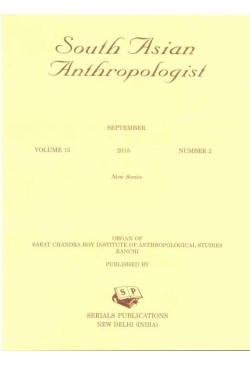
South Asian Anthropologist
Frequency :Bi-Annual
ISSN :0257-7348
Peer Reviewed Journal
Revenue Mobilization and Politics at Union Parishad in Bangladesh
Parental Role and Attitude Towards Child Healthcare Practices: A Cross-sectional Study from North 24-Parganas District of West Bengal
Incidence of Isochromosome Xq at Division of Human Genetics, Bangalore Medical College and Research Institute, Bangalore
A Study on the Prevalence of Malaria in Kolkata, West Bengal
Antenatal Care Service Utilization among Ever-married Women of Sumbuk Village in Sikkim
Path Analysis of Blood Pressure Correlates in a Village Sample of Sagar District, Madhya Pradesh
An Ethnographic Note on the Wanchos of Arunachal Pradesh
Health Seeking Behaviour of Rural and Urban Santals of Bankura District, West Bengal
A Household Study on Nutritional Status among Mothers and Their School Going Children in Upazila Godagari, Rajshahi District, Bangladesh: A Statistical Analysis
Reservation for Janajati in Nepal’s Civil Service: Analysis from Intersectional Lens
Panchanan Mitra: Scholar Extraordinary